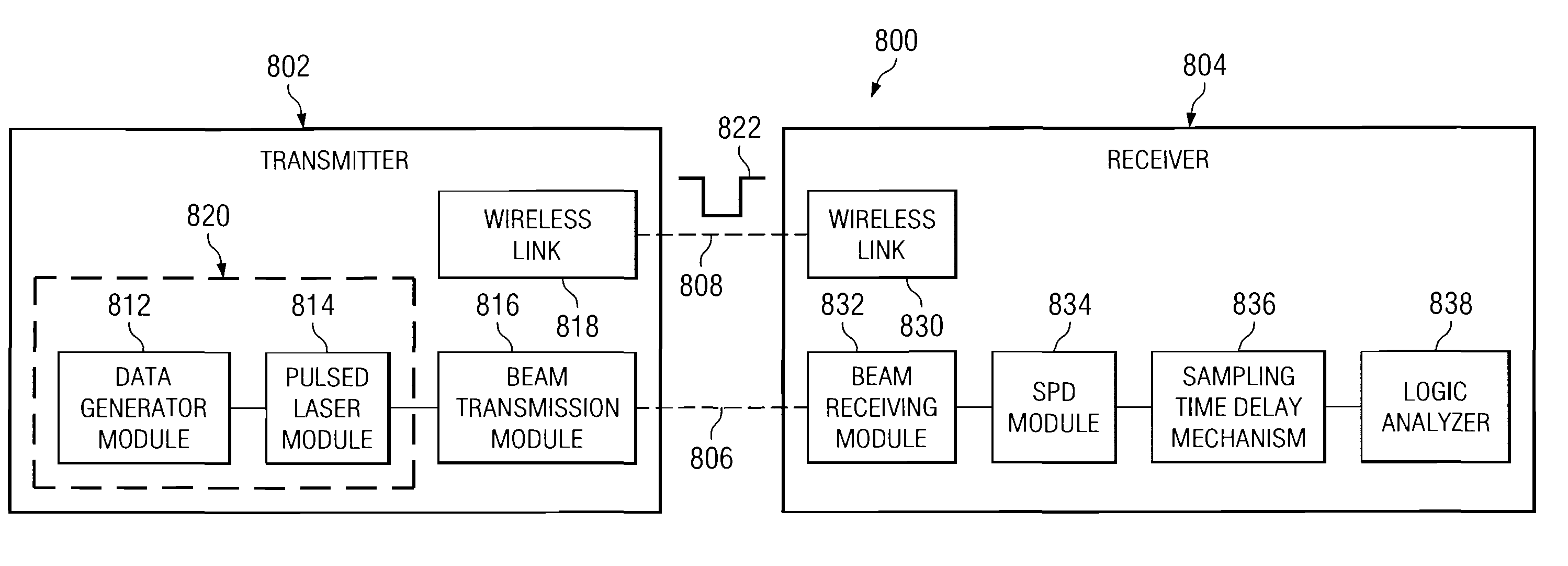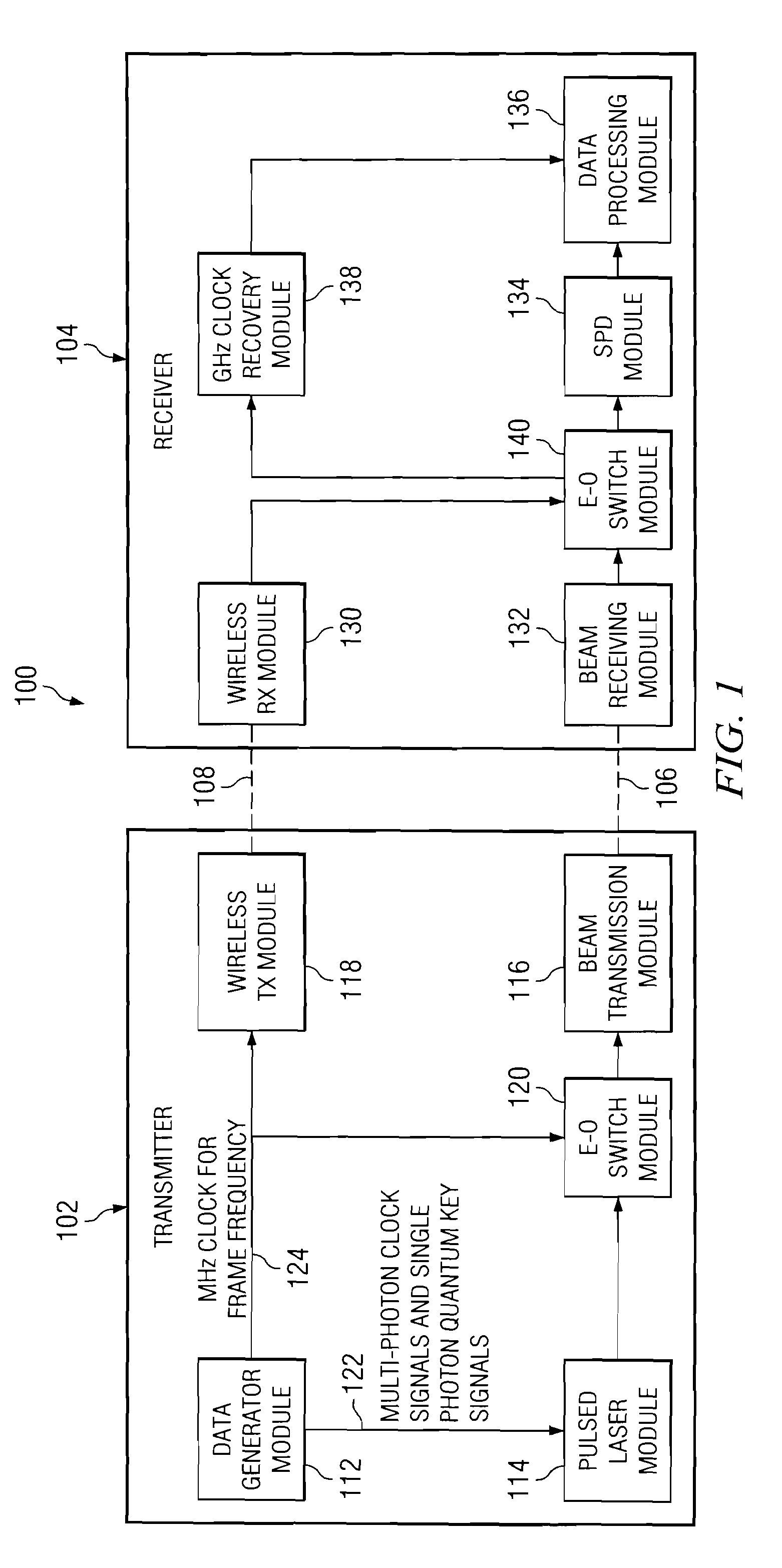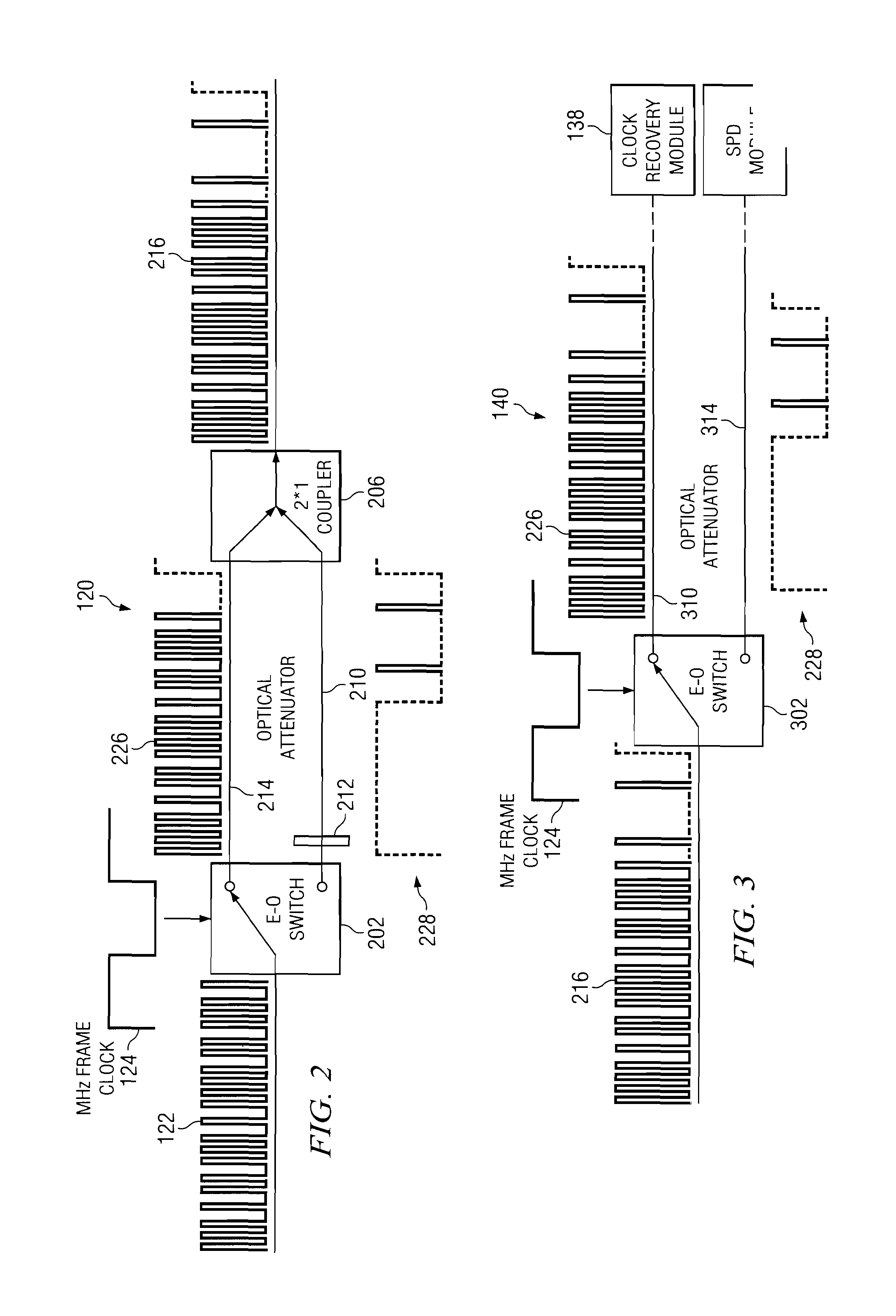Quantum key distribution system and method
a distribution system and quantum key technology, applied in the direction of digital transmission, unauthorized memory use protection, instruments, etc., can solve the problems of quantum state loss, large size and weight, and relatively complex hardware of the qkd system, so as to reduce the quantum bit error rate
- Summary
- Abstract
- Description
- Claims
- Application Information
AI Technical Summary
Benefits of technology
Problems solved by technology
Method used
Image
Examples
Embodiment Construction
[0036]With reference now to the figures, and, in particular, with reference to FIG. 1, an illustration of a free space quantum key distribution system in accordance with an advantageous embodiment of the disclosure is depicted. The free space quantum key distribution (QKD) system is designated by reference number 100, and may include transmitter 102 and receiver 104 capable of optically communicating with one another across free space via a single optical channel schematically illustrated at 106, and via a wireless communications link schematically illustrated at 108.
[0037]Transmitter 102 may include data generator module 112, pulsed laser module 114, beam transmission module 116, wireless transmitter module 118 and electro-optic (E-O) switch module 120. Data generator module 112 produces random bits (raw keys). The random bits may be generated, for example, by a pseudo-random number generator or by a real quantum random number generator. A pseudo-random number generator is based on...
PUM
 Login to View More
Login to View More Abstract
Description
Claims
Application Information
 Login to View More
Login to View More - R&D
- Intellectual Property
- Life Sciences
- Materials
- Tech Scout
- Unparalleled Data Quality
- Higher Quality Content
- 60% Fewer Hallucinations
Browse by: Latest US Patents, China's latest patents, Technical Efficacy Thesaurus, Application Domain, Technology Topic, Popular Technical Reports.
© 2025 PatSnap. All rights reserved.Legal|Privacy policy|Modern Slavery Act Transparency Statement|Sitemap|About US| Contact US: help@patsnap.com



